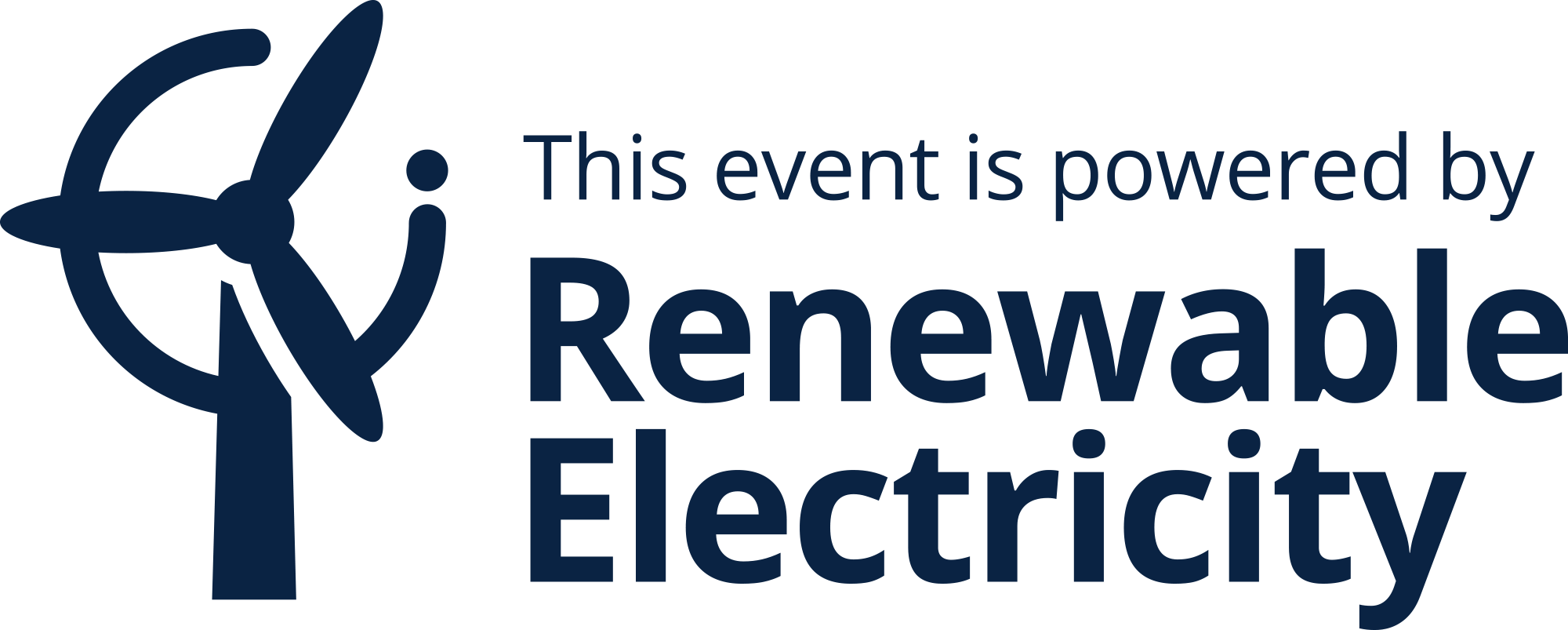How can hotels optimize their pricing strategies to maximize revenue? Pricing is critical for hotels to attract guests and achieve sustainable profitability.
One key performance indicator (KPI) that hoteliers use to track and optimize pricing is the Average Room Rate (ARR).
This metric, also known as ADR (Average Daily Rate), is essential for revenue management, reflecting the average revenue earned per occupied room over a specific period.
Calculating and comprehending what an average room rate is allows hotel managers to make informed decisions about room pricing, ultimately impacting the hotel’s financial performance and competitiveness in the market. This is precisely what we will explore in detail ahead.
What is an Average Room Rate (ARR)?

The Average Room Rate (ARR), often called the average daily rate (ADR), represents the average revenue generated from occupied rooms during a particular period.
It’s calculated by dividing the total room revenue by the number of rooms sold. This metric helps hotels monitor room pricing efficiency and informs decisions about revenue management and guest satisfaction.
ARR is crucial for assessing a hotel’s financial performance. By analyzing ARR, hotels can track trends in room revenue, adjust pricing strategies based on seasonality, and understand their position in the market compared to competitors.
For example, a hotel with a higher ARR than its competitors typically indicates that it successfully attracts guests at profitable rates, contributing positively to overall revenue and profitability.
How to Calculate Average Room Rate (ARR)?
Calculating the average room rate involves a straightforward formula that requires only two pieces of data: total room revenue and total occupied rooms. Here’s the formula:
Explanation of the Formula
- Total Room Revenue: This figure includes the revenue generated solely from room sales, excluding other hotel revenue sources like food and beverage or spa services.
- Total Occupied Rooms: This is the total number of rooms occupied over the period being measured, whether that’s daily, monthly, or annually.
Example Calculation
Let’s say a hotel generates $200,000 in room revenue over a month, with 1,000 occupied rooms during that time. Using the ARR formula, we can calculate:
ARR = $200,000 / 1,000 = $200
This calculation shows that the hotel’s average revenue per room is $200, helping hotel management evaluate if this rate aligns with their revenue goals and market standards.
Importance of ADR in Hotel Management

In the competitive hotel industry landscape, establishing an effective room pricing strategy is crucial for attracting guests and ensuring profitability.
The Average Daily Rate (ADR), also known as the average room rate, is one of the most valuable tools for hotel managers who rely on data-driven pricing decisions.
ADR represents the average revenue earned per occupied room over a specific time period, offering insight into revenue performance, pricing effectiveness, and competitive positioning.
Below, we explore the core areas where ADR is integral to hotel management: revenue optimization, benchmarking, and profitability analysis.
1. Revenue Optimization
Maximizing revenue is essential for hotel profitability, and ADR provides crucial insights to support revenue optimization. When understanding ADR patterns, hotels can adjust room rates based on demand, ensuring they capture the highest possible revenue per room.
- Understanding Guest Demand: ADR helps managers identify trends in guest spending behavior and seasonal room demand. When tracking ADR, hotels can see when to adjust rates strategically for peak periods, ensuring maximum revenue per room without sacrificing occupancy.
- Dynamic Pricing in High-Demand Periods: During peak times—like holidays, local festivals, or popular events—ADR guides hotels to raise room rates in response to increased demand. This strategic pricing boosts revenue while maintaining high occupancy rates.
- Revenue Management Software: Many hotels employ revenue management software that integrates ADR data with real-time occupancy, historical data, and seasonal demand, enabling dynamic pricing. The software adjusts room rates based on market trends, maximizing revenue potential.
- Promotions During Low-Demand Periods: Optimizing ADR isn’t limited to peak pricing; it also involves offering attractive packages or discounted rates during off-peak times to attract guests, maintain steady occupancy, and support a consistent revenue stream.
2. Benchmarking
Benchmarking ADR enables hotels to understand their pricing position relative to the competition, helping managers assess whether their rates align with market standards.
- Comparing Performance with Competitors: The average room rate formula is central to hotel benchmarking. It allows managers to compare their ADR with similar hotels in the market. This comparison reveals whether a hotel’s pricing aligns with competitors or if there are gaps that need addressing.
- Tools for Market Comparison: Benchmarking platforms like STR (Smith Travel Research) provide ADR averages across various regions and hotel categories. Hotels can assess how their rates stack up and identify areas for improvement, ensuring competitive pricing and attractiveness to guests.
- Responding to Market Trends: When leveraging ADR data, hotels can detect broader guest behavior and demand trends, helping them anticipate opportunities. For instance, if market data indicates a spike in ADR during the holiday season among competitors, a hotel might adjust its pricing strategy to capitalize on that demand.
3. Profitability Analysis
Evaluating ADR alongside other financial indicators gives hoteliers a comprehensive view of profitability and operational efficiency.
- Assessing Revenue Contribution: ADR provides valuable insights into the hotel’s financial performance, showing how effective room pricing is in generating revenue. Generally, a high ADR indicates that a hotel successfully attracts premium-paying guests, contributing positively to profitability.
- Balancing ADR with Occupancy Rates: While a high ADR can signal financial strength, it’s essential to consider it alongside occupancy rates. High rates with low occupancy suggest that pricing may deter potential guests, resulting in missed revenue. Hotels need a balanced approach to optimize profitability, where ADR supports high occupancy.
- Comparing ADR with Other KPIs: To get a complete picture of profitability, ADR is evaluated alongside Revenue per Available Room (RevPAR) and Gross Operating Profit per Available Room (GOPPAR):
- RevPAR incorporates occupancy, offering a comprehensive look at revenue potential.
- GOPPAR accounts for operating expenses, showing how revenue translates into profit and providing a deeper understanding of the hotel’s financial health.
When integrating ADR with other KPIs, hotels can identify trends, make strategic pricing adjustments, and support long-term financial stability.
Strategies for Increasing ADR

Increasing the Average Daily Rate (ADR) is a primary goal for hotels looking to maximize revenue from each guest stay. ADR can be boosted by pricing optimization, adding value, and appealing to guests willing to pay for premium experiences.
The strategies below provide hotels with actionable methods to boost ADR while improving the guest experience.
1. Revenue Management
Effective revenue management is key to setting room prices that maximize revenue. With revenue management software, hotels can dynamically adjust rates in response to real-time data, such as booking trends, occupancy rates, and market demand.
This software analyzes historical booking data, seasonal demand patterns, and competitive pricing trends to recommend ideal room rates responsive to the market.
- Dynamic Pricing: With dynamic pricing, room rates can automatically increase during peak periods (e.g., holidays and local events) and adjust to attract bookings during slower periods. This pricing flexibility helps boost ADR and maintains a competitive edge by matching rates to current demand.
- Yield Management: Some hotels employ yield management, a practice of adjusting prices to maximize revenue from perishable inventory (in this case, rooms). When keeping ADR aligned with demand, yield management strategies ensure that room pricing is optimized, helping the hotel capitalize on higher revenue potential during high-demand periods.
2. Upselling and Cross-Selling
Upselling and cross-selling are tried-and-true methods for increasing ADR by encouraging guests to upgrade or add services to their booking. When offering guests options for improved experiences, hotels can increase revenue per room while meeting guests’ expectations for a memorable stay.
- Room Upgrades: Front desk staff can offer guests the option to upgrade to a premium room for a slightly higher rate. For example, guests might be offered an upgrade to a suite or a room with a scenic view. These small increases contribute to a higher ADR while giving guests a better experience.
- Bundled Services: Besides room upgrades, cross-selling services like spa treatments, dining vouchers, or guided tours can encourage guests to spend more. For example:
- A “romance package” might include a spa session, dinner, and a room upgrade, providing value to guests while boosting ADR.
- Family-friendly hotels could offer an “adventure package” with kid-friendly tours or tickets to nearby attractions, adding value and increasing overall spending.
3. Value-Added Packages
Creating value-added packages is another effective way to increase ADR while providing guests with a unique and comprehensive experience. These packages combine the room rate with additional services or amenities, giving guests a well-rounded and memorable stay at a higher price point.
- Special Occasion Packages: Offering packages that cater to specific guest needs, such as a “romantic getaway” or “birthday celebration,” can attract guests willing to pay a premium. For example:
- A romantic package might include a room with a view, breakfast in bed, and a bottle of champagne.
- A birthday package could include a room upgrade, in-room decorations, and a complimentary dinner.
- Seasonal Packages: Seasonal offers, like a “winter getaway” or “holiday escape,” appeal to guests visiting during certain times of the year. These packages can include services such as a holiday dinner, themed room decor, or exclusive access to local attractions, helping the hotel capture guests looking for seasonal experiences.
4. Targeted Marketing
Targeted marketing is an impactful strategy for attracting higher-paying guests by promoting premium offerings to those most likely to book them.
By focusing on specific guest segments, such as luxury travelers or business guests, hotels can drive higher average room rates through personalized marketing campaigns.
- Identifying High-Value Segments: Luxury travelers, business guests, and families seeking improved amenities are more likely to pay for premium experiences. For instance, business travelers may appreciate rooms with convenient workspace setups and complimentary high-speed internet, while families may value access to kid-friendly amenities or family suites.
- Personalized Marketing Campaigns: Marketing efforts that promote specific hotel features, like exclusive scenic views or premium room services, can attract guests willing to pay more. Examples include:
- Social media ads target adventure travelers looking for a hotel near local attractions.
- Email campaigns offering premium suites to frequent business travelers, emphasizing amenities like conference rooms or lounge access.
- Highlighting Unique Hotel Features: Personalized marketing allows hotels to showcase their most valuable features. Hotels with luxury suites, unique architecture, or premium services (like spa treatments or gourmet dining) can use targeted campaigns to attract guests seeking exclusive experiences. Highlighting these features creates a sense of exclusivity and justifies a higher room rate.
Factors Influencing ARR
Navigating the Seasons:
The seasons play a significant role in shaping the Average Room Rate (ARR). Take, for instance, a hotel by the beach. The ARR is likely to climb during the summer rush, but it might ease off during quieter months. It’s a seasonal rhythm that guides pricing.
Location’s Impact:
Where a hotel stands matters for ARR; a downtown hotel might charge more than one in the suburbs. Proximity to attractions, business hubs, or transport links adds value, steering the pricing strategy in a particular direction.
Amenities’ Influence:
A hotel’s offerings impact ARR. If you’re providing premium services like spas, fine dining, or exclusive events, it justifies a higher room rate. It’s a delicate balance where amenities and ARR (Average Room Rate) influence the perceived value.
Market Demand Swings:
Market demand sets the tone for ARR. During high-demand periods like events or festivals, rates might rise. Conversely, competitive pricing is vital for keeping rooms occupied in low-demand times. The ebb and flow of demand influence rates.
Adapting to Fluctuations:
Understanding ARR’s dynamic nature means adapting to these influencing factors. A hotel in a ski resort might see higher ARR in winter but needs to adjust rates in the off-season. Flexibility in pricing ensures a balanced financial performance.
Market Trends as Guides:
Market trends act as guides in this hospitality journey. Whether it’s embracing tech amenities or eco-friendly initiatives, aligning with trends enhances perceived value and nudges ARR in a positive direction.
Striking the Right Balance:
Managing ARR is about finding the right balance. It involves being nimble, adjusting to seasonal shifts, leveraging location advantages, enhancing amenities, and aligning with market trends. It’s a practical approach for optimizing ARR in the ever-changing hospitality landscape.
ARR vs. Other Hotel KPIs
While the ARR is a critical metric for evaluating room revenue, it’s just one piece of the larger financial picture for hotels.
To fully understand profitability and revenue potential, hoteliers often compare ADR with other key performance indicators, such as Revenue per Available Room (RevPAR) and Gross Operating Profit per Available Room (GOPPAR).
Each hotel KPI offers unique insights that, when used in conjunction, help hotels make balanced and effective pricing and operational decisions.
Comparing ARR with RevPAR
Revenue per Available Room (RevPAR) is a critical indicator that considers both room rate and occupancy, unlike ARR.
While ADR focuses solely on the revenue generated from occupied rooms, RevPAR offers a broader view of a hotel’s revenue potential by incorporating the hotel’s ability to fill rooms at profitable rates.
When prioritizing RevPAR and ADR, hotels can balance pricing strategies with occupancy levels, ensuring a steady revenue stream even during fluctuating demand.
- Comprehensive Revenue Insight: RevPAR calculates the total revenue per available room, whether or not each room is occupied, making it an ideal metric for assessing overall revenue performance. For example, a high RevPAR indicates that a hotel effectively manages occupancy and pricing to maximize revenue.
- Balancing Occupancy and Rate: Focusing on RevPAR alongside ADR helps hotels find the optimal room rate and occupancy mix. For instance, a hotel with a high ADR but low occupancy might see a revenue dip; adjusting rates to increase occupancy can stabilize RevPAR and overall revenue.
ARR and GOPPAR
Gross Operating Profit per Available Room (GOPPAR) is another essential metric that considers both room revenue and operational costs, offering a complete picture of financial performance per room.
While ARR supports pricing strategies by measuring revenue from room sales, GOPPAR incorporates all operating expenses, enabling hotels to track how effectively room revenue translates into profit.
- Operational Cost Consideration: Unlike ADR, which doesn’t account for costs, GOPPAR includes all expenses associated with hotel operations. This makes GOPPAR especially valuable for assessing profitability, as it shows whether room revenue is sufficient to cover operational costs.
- Aligning Pricing with Profitability Goals: When comparing ADR with GOPPAR, hotels can assess whether their pricing strategies effectively contribute to profitability. For example, if GOPPAR is low despite a high ADR, it may signal that operational costs are too high and need adjustment.
Conclusion
Knowing an average room rate and how to use it is essential for hotels aiming to optimize revenue and maintain competitive pricing.
Calculating ADR using the formula (Total Room Revenue / Total Occupied Rooms) allows hotels to assess their room pricing and revenue performance.
Implementing strategies such as revenue management, upselling, value-added packages, and targeted marketing can help hotels boost ADR while delivering exceptional guest experiences.
Additionally, comparing ADR with other KPIs like RevPAR and GOPPAR gives hotel managers a well-rounded view of performance, helping them balance profitability and occupancy.
Adopting ADR as a key metric enables hotels to make informed decisions that drive sustainable growth and financial success.















